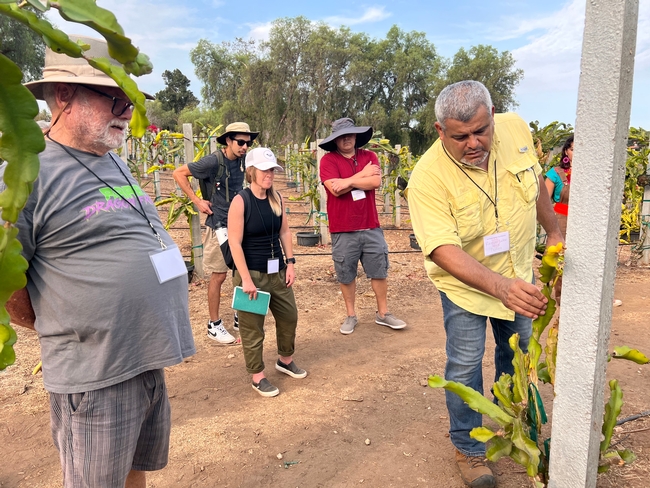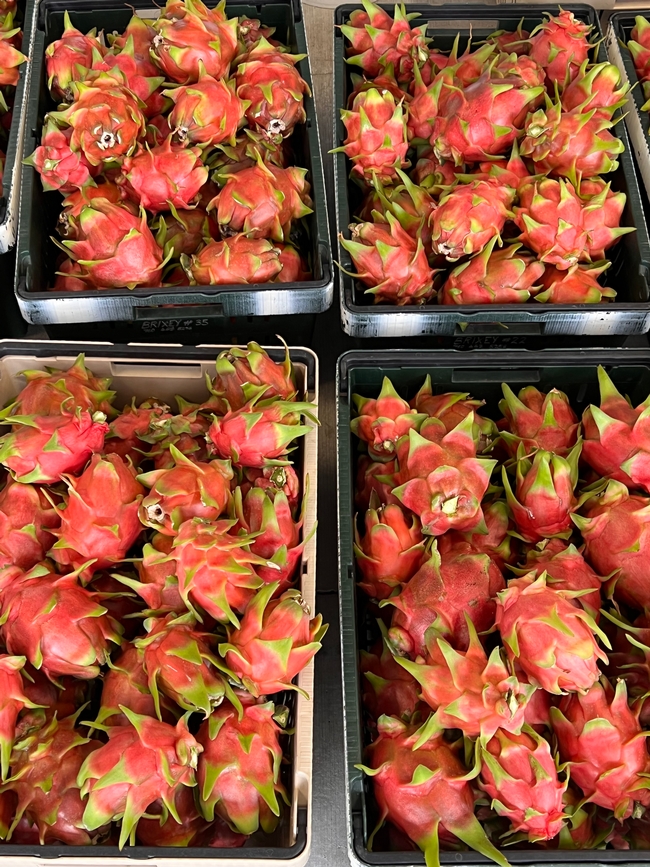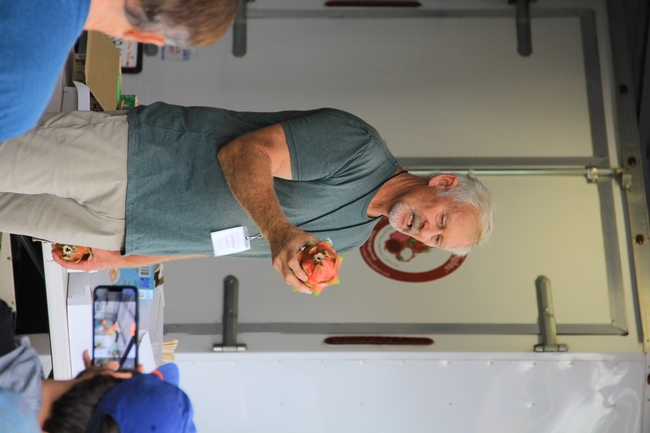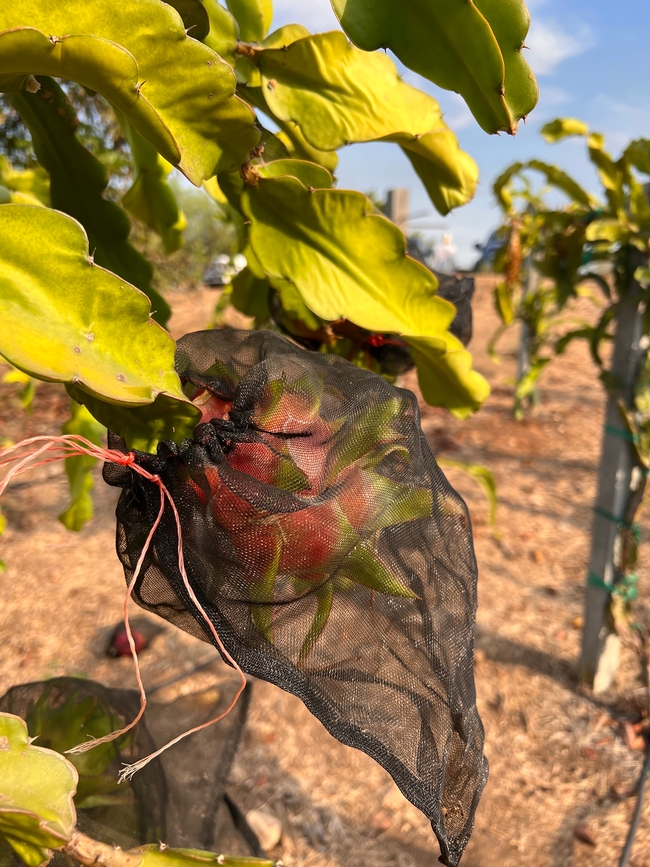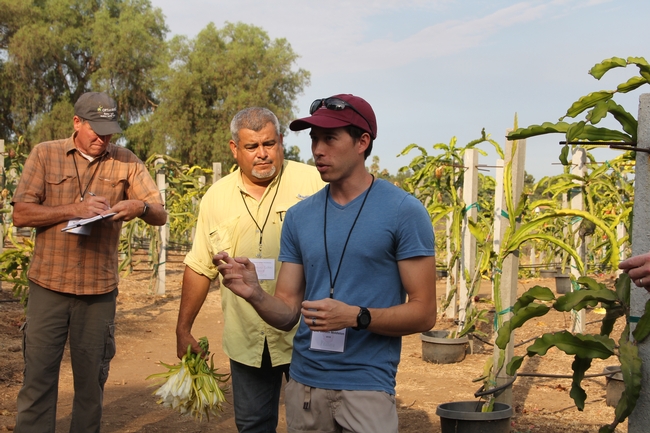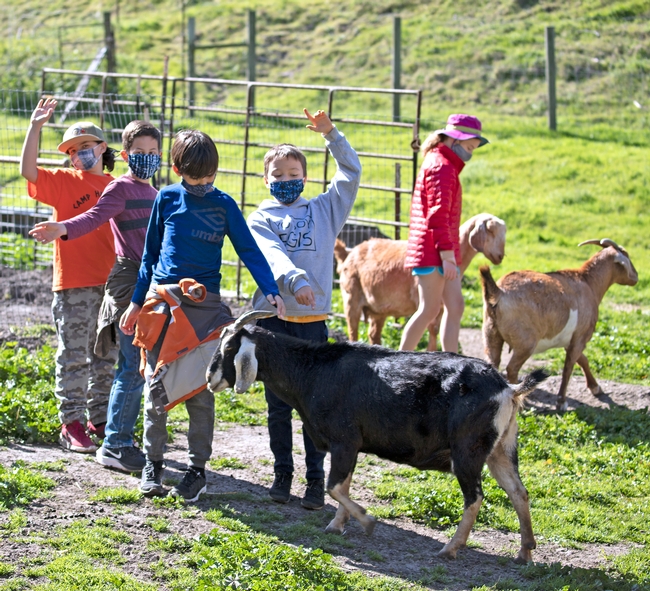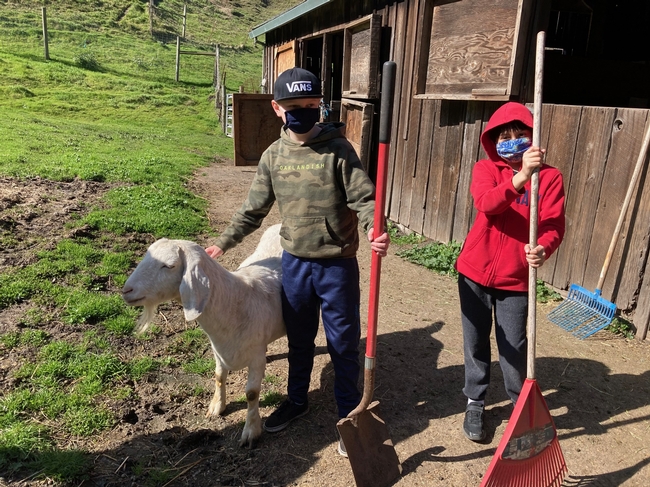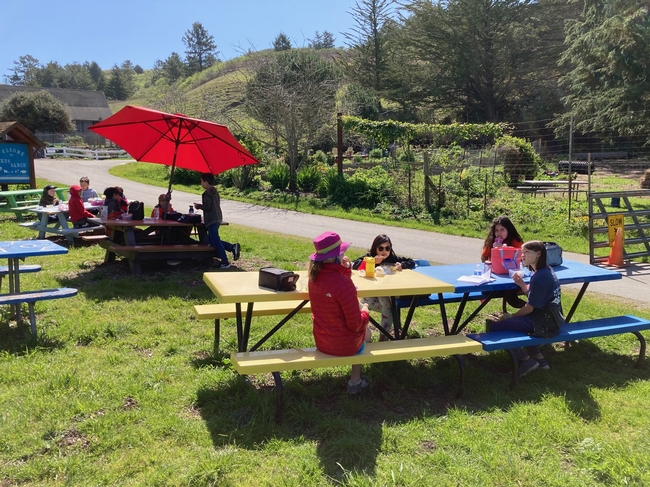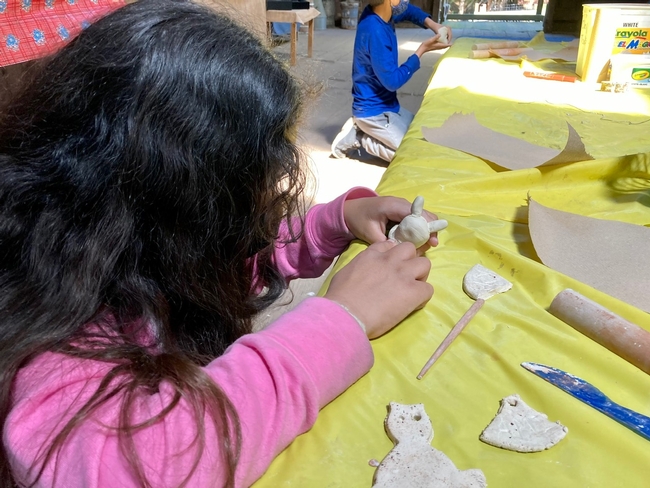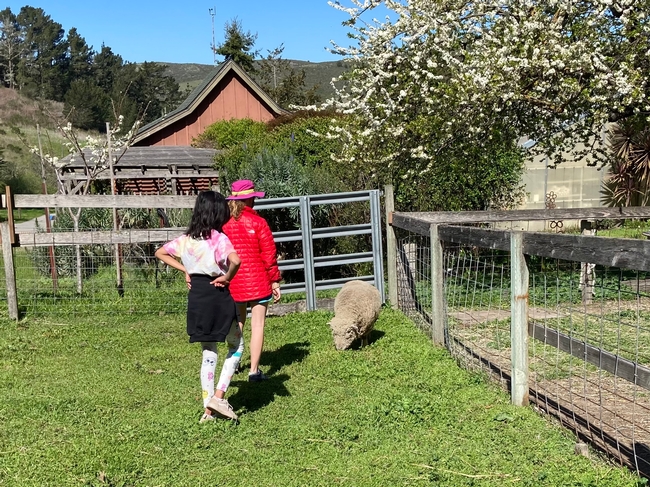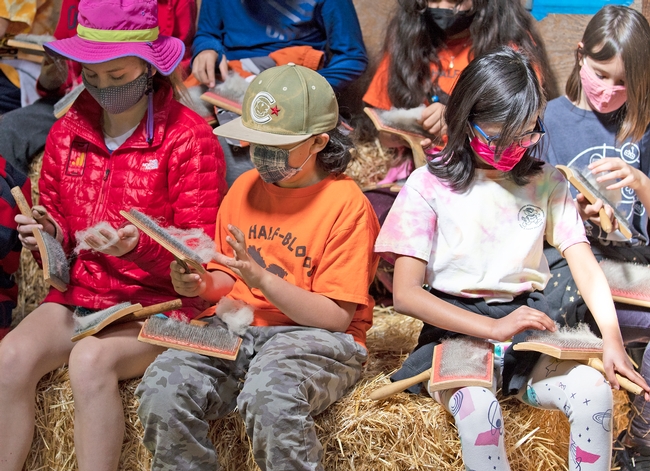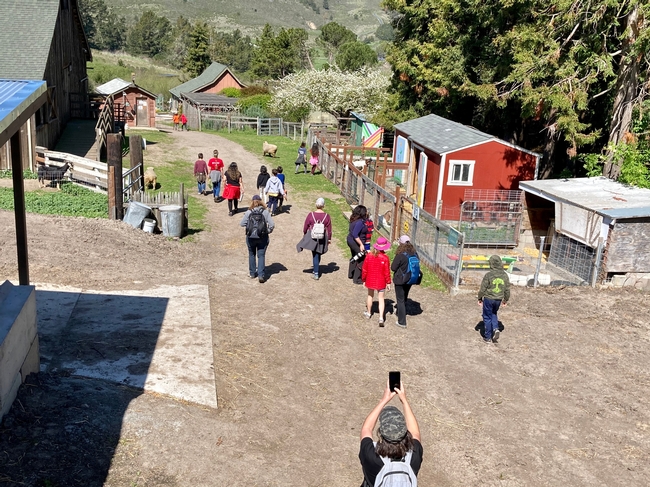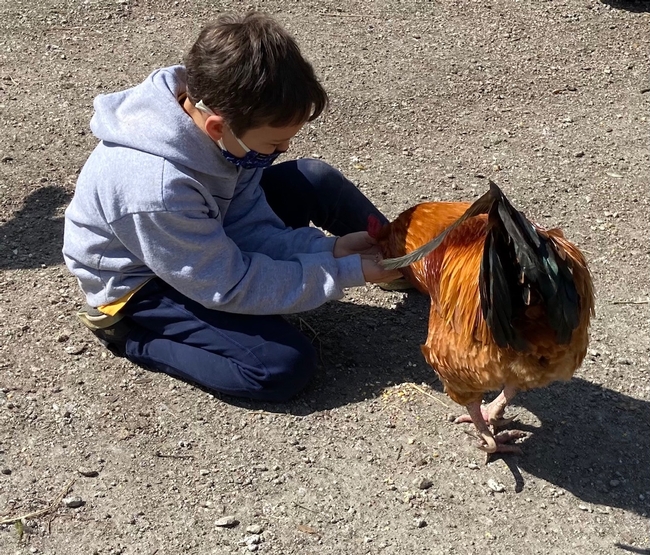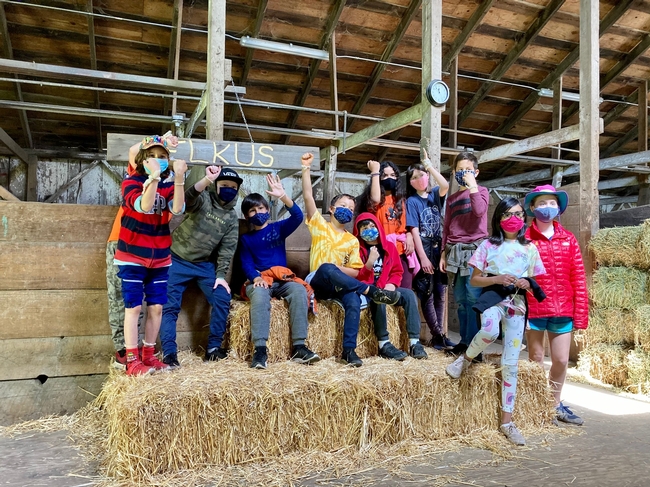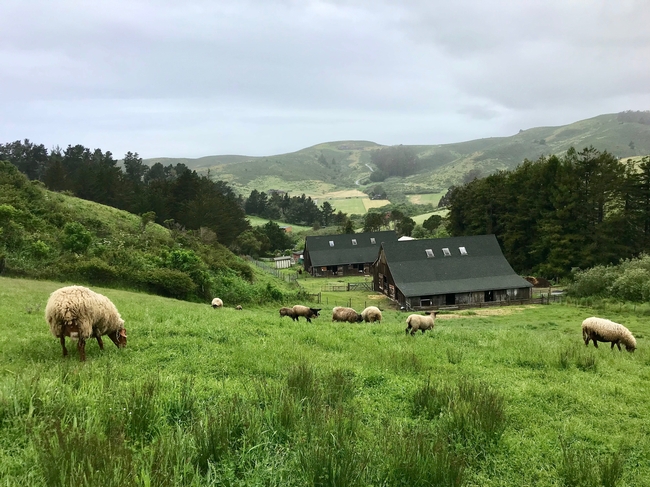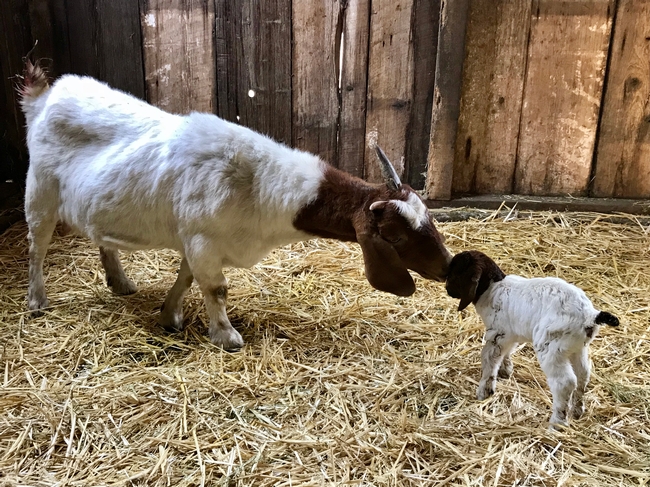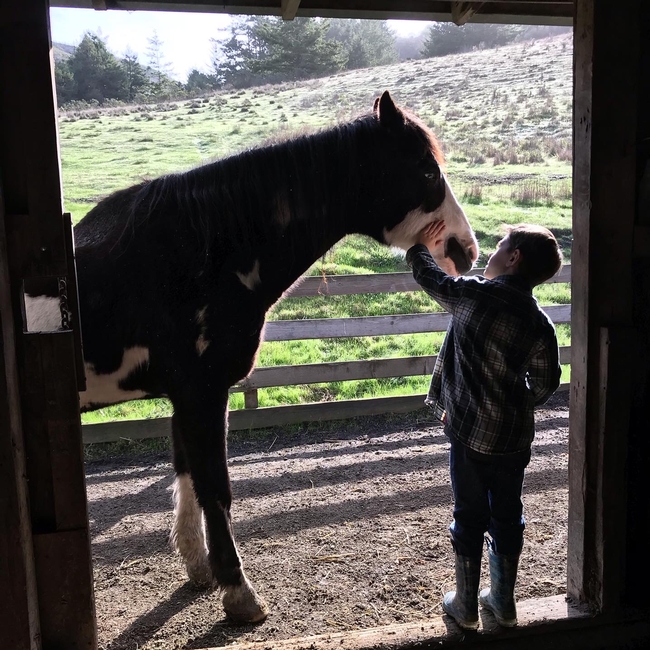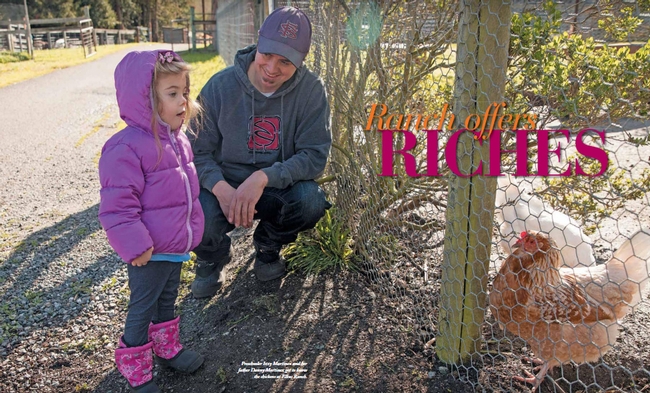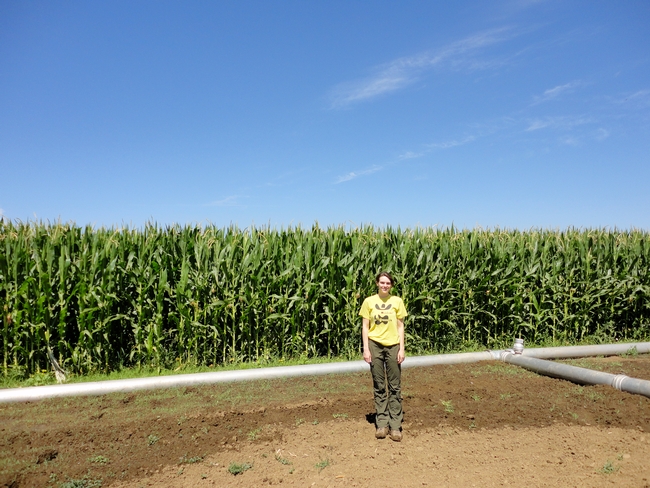Posts Tagged: ranch
Pitahaya/dragon fruit growers gather to learn from UCCE research and each other
Once you know what a dragon fruit looks like, you will never forget it. The bright red, sometimes yellow or purple, scaly skin makes for a dramatic appearance. One that will surely leave an impression. The flesh ranges from white to a deep pink and the flavor is often described as having hints of kiwi, watermelon, or pear.
Since 2007, the Pitahaya/Dragon Fruit Production Tour, has united dragon fruit growers of all levels and backgrounds. After a two-year hiatus due to the pandemic, registration for the 2022 tour filled up in less than 24 hours.
A group of 60 participants gathered Sept. 8 at the Wallace Ranch Dragon Fruit Farm in Bonsall to learn the latest research on growing the drought-tolerant specialty crop. Ramiro Lobo, a small farms and agricultural economics advisor for UC Cooperative Extension in San Diego County, introduced dragon fruit growers and other UC scientists.
“I can't remember a year where this event was not sold out. So, the need and demand is there,” said Eyal Givon, a long-time participant and dragon fruit grower.
The tour not only demonstrates how to grow the fruit, but it also grants participants access to plant material for varieties that are unavailable elsewhere.
“We have given out about 50,000 cuttings through our festival and some varieties were unique to us because we introduced them to the U.S.,” said Lobo.
During their time at Wallace Ranch, participants heard from the farm's owner, Neva Day, regarding the growing practices that have shaped her success today. Day has been growing organic dragon fruit since 2013 and has well over 5,000 plants on the ground and more than 20 varieties.
Eric Middleton, UCCE integrated pest management area advisor for San Diego County, talked about managing insects and pests that growers are likely to encounter such as Argentine ants.
According to Middleton, Pecan Sandies are a balanced source of fat, protein, and sugar, making them excellent bait for the sugar-loving insects.
Participants eventually made their way to Dragon Delights Farm located in Ramona. Kevin Brixey, the farm's owner, has been growing organic dragon fruit for six years.
Although Brixey was hosting this year's tour participants, he used to be one of them.
“I attended the Pitahaya Festival in 2014 and that's where I realized dragon fruit was something I could grow. There was a lot of good information being shared and a connection to other growers, so it was a major steppingstone for me,” he says.
Unlike traditional dragon fruit growers, Brixey uses shade to grow his dragon fruit after learning about the method from another grower.
“I was impressed. I liked how the fruit performed under shade and now I use it as a management tool,” Brixey explained. In Inland Valleys, shade can shield fruit from intense sunlight and protect them from unwanted guests that eat the fruit, such as birds.
At the Farm Bureau of San Diego County offices, participants learned about the history of dragon fruit growing in California, food safety, pest management, best production practices and much more.
The presenters included experts like Paul Erickson from Rare Dragon Fruit, Lobo, Middleton, Johanna del Castillo from UC Davis Department of Plant Pathology and Ariana Reyes, a community education specialist from UCCE San Diego.
When reflecting on his time participating in the production tour, Givon, who has been growing dragon fruit for about 20 years and manages a 20-acre farm in Moorpark, said he enjoys reconnecting with other growers the most.
“What others are doing, might be better than what I'm doing,” Givon said. “Or what I'm doing, could be better than what someone else is doing. This time together is good for us to learn from each other.”
Lobo agreed with Givon and added, “I hope that these tours become self-sustained, and that we go back to a research field day at Southcoast REC with regional tours in San Diego and Ventura as we did before, or any other counties.”
The Pitahaya/Dragon Fruit Production Tour is an annual event hosted by UCCE San Diego. To learn more about UCCE San Diego events, visit https://cesandiego.ucanr.edu.
‘I wish this was my school’: Young students get hands-on at Elkus Ranch
Curious goats milled around the masked elementary school students who were raking out the livestock stalls. After a year of social distancing due to COVID-19 precautions, the goats were enthralled by the youngsters who visited UC Agriculture and Natural Resources' Elkus Ranch Environmental Education Center in San Mateo County.
“The animals were missing kids, they're used to getting more loving,” said Beth Loof, 4-H youth community educator at Elkus Ranch. “Goats are really social. They get distressed when they are alone.”
Tucked behind the rolling green hills of Half Moon Bay off state Route 1, Elkus Ranch is a working landscape that, in a normal year, hosts people from all over the San Francisco Bay Area for field trips, conferences, community service projects, internships and summer camps.
During the pandemic, UC ANR has limited visitors to “social bubbles” of children and adults for outdoor education at the 125-acre ranch, which has implemented a variety of COVID protocols for the safety of visitors. During Adventure Days, young people spend four hours caring for animals, tending gardens, making a nature-themed craft project and hiking around the property.
“We would love to bring children from urban areas of the Bay Area to Elkus Ranch,” said Frank McPherson, director of UC Cooperative Extension for Alameda, Contra Costa, San Mateo and San Francisco counties. “So they can learn where food comes from, before it gets to the grocery store.”
On a sunny spring day, 11 students from Share Path Academy in San Mateo visited for Adventure Day, as their first field trip of the year.
“Coming here and having the hands-on learning, being able to hold objects, touch objects, interact with things, it's all part of learning,” said Erin McCoy, a Share Path Academy teacher. “In science, you can talk about certain things in classes, but when you come out here and you actually apply it to what they're doing and it's tactile for them, at this age, it's really important.”
The group – composed of McCoy, nine fifth-graders, a fourth-grader, a sixth-grader and a couple of parents – spent the day outdoors petting the donkeys, goats, chickens, rabbits and sheep and learning about the animals that live at Elkus Ranch.
“I think it's been a great opportunity for our children to be outdoors and to enjoy nature, to reconnect with the environment – animals, plants, just the outdoors,” said parent Christina Cabrera. “It's great for the children and the adults accompanying them.”
Inside the barn, Loof invited the students to sit on straw bales – not the hay bales, which are food for the livestock. She showed the students how wool that is sheared from sheep's coats is spun into yarn. First, they carded the wool. “You're going to card it like this. It's like brushing your hair, but it has a little resistance so it can be a workout,” Loof said, cautioning the students wearing shorts to be careful not to brush their skin with the sharp, wire teeth of the tool. “Get all the fibers nice and flat, lined up, going one way. Fibers are what we call all the strands of wool.”
After twisting the wool by hand into yarn, the students fashioned the natural-colored fuzzy strands into bracelets.
“We love Elkus,” said McCoy, whose son has attended summer camp at the ranch. “This place is awesome.”
Taking a break for lunch, the group walked down the dirt path from the barn past the livestock pens to wash their hands, then sat at primary-colored picnic tables to eat next to a garden.
After lunch, the students exercised their creativity with buckets of clay to mold into animals or roll out and cut with cookie cutters.
In the chicken coop, Loof, who is one of four community educators who work at Elkus Ranch, shared animal science facts such as, “Eggs are viable for two weeks after the hen sits on them in the nest.” She also told funny stories such as how Dora, the white bantam, escaped the coop and ate all the chard in the garden.
“I wish this was my school,” said one student as he held an egg-laying hen.
The visit ended with a garden tour and a game of hide and seek among the raised beds of onions, squash and other vegetables.
“Being outdoors is an important counterbalance to being on a computer,” said Cabrera, who is also a San Mateo High School wellness counselor. “It's a great addition to what we're doing. Just to be with animals.”
Elkus Ranch is still offering Adventure Days for children; the cost is $425 for 10 people. Small groups are also invited for 90-minute visits.
“If all goes well, we plan to offer a three-day mini-camp Monday through Wednesday of Thanksgiving week,” said Leslie Jensen, Elkus Ranch coordinator.
For more information about Elkus Ranch activities, visit ucanr.edu/adventure or contact Jensen at LKJensen@ucanr.edu.
Private, educational family tours offered at UC Elkus Ranch
Homeschooling families are invited to venture out to a new learning environment at UC Elkus Ranch in Half Moon Bay. UC Elkus Ranch is an environmental education center, providing unique hands-on learning experiences for Bay Area youth. Due to COVID-19 precautions, UC Elkus Ranch has temporarily opened to the general public for private family tours only.
UC Cooperative Extension educators lead small groups on a remote-learning walk through the pastoral fields, vegetable gardens, historic barns and animal pens at UC Elkus Ranch.
“Families can feed our sheep while learning about wool processing, hear how predators and prey adapt, view our impressive animal bone collection, take selfies with our goats and miniature donkeys, and plant a seedling to take home,” said Frank McPherson, director of UC Cooperative Extension for the Bay Area.
Tours must be scheduled in advance and all statewide and San Mateo County Health Department restrictions are being enforced. Current information on San Mateo County health restrictions can be found at https://www.smchealth.org/health-officer-orders-and-statements. For information on scheduling and pricing, please visit http://elkusranch.ucanr.edu/Visit/Family_Tours.
Elkus Ranch, property of the University of California, conducts educational outdoor programs for urban, disabled and inner-city youth in environmental science, California history, animal care and agricultural programs year-round.
Located on the central California coast in Half Moon Bay, the ranch offers diverse programs including those specifically designed for students with special needs, allowing participants to learn about the inter-relationship of the environment and themselves in a rural setting. Under normal circumstances,Elkus Ranch hosts more than 9,000 youth and adults each year from all over the San Francisco Bay Area including Alameda, Contra Costa, Marin, Santa Clara, San Francisco and San Mateo counties.
Elkus Ranch also has a conference center that can be leased separately. The 4,400 square foot educational and conference facility is available for daytime retreats, meetings and workshops year-around. Current COVID-19 restrictions may affect availability. Additional information about the ranch and conference center, can be found at http://elkusranch.ucanr.edu/Visit/Conference_Center.
For more information about Elkus Ranch, please visit http://elkusranch.ucanr.edu or contact Leslie Jensen at LKJensen@ucanr.edu or (650) 712-3151.
UC ANR's Elkus Ranch is an outdoor classroom for local youth
Each year, about 9,000 kids visit the UC Agriculture and Natural Resources Elkus Ranch in Half Moon Bay for hands-on educational experiences in urban horticulture, nutrition, food safety, pest management, livestock management and food preservation, reported Sara Hayden in April 2018 issue of Half Moon Bay Magazine (the article begins on p. 16).
Hayden visited the ranch with photographer Jaime Soja when a group of preschoolers descended to explore the garden and meet the farm animals.
"They can taste and touch and smell things - feel the wool of a sheep or an egg, know where their food is from, where the clothing fiber comes from," said Kathi Baxter, UC Cooperative Extension environmental science educator at Elkus Ranch. "Ideally, kids would get the idea that space is necessary to grow food. We're hoping to plant that seed of stewardship here."
The Elkus family donated the 125-acre ranch in the 1970s as a gift for youth. The ranch's operating budget depends heavily on grants and donations.
For more, visit the Elkus Ranch website at http://ucanr.edu/sites/elkus_ranch.
In a new study biochar helps yields, but only in the short term
Adding biochar to a farm's field is an irreversible decision, so understanding its long-term impacts is essential for farmers to make informed decisions.
Biochar, a charcoal created from organic materials burned at high temperatures and added as a soil amendment, has been shown to increase pH and soil fertility in areas with more weathered, acidic soils, like the tropics. But a new study shows its impact on productive soils like those in California's Central Valley may be quite different.
Findings from a four year study conducted at the Russell Ranch Sustainable Agriculture Facility at UC Davis showed an increase in corn yields in the second year after adding biochar, but through different means than have been observed elsewhere.
The study, published in the journal Agriculture, Ecosystems and Environment, used biochar made from walnut shells, cooked at 900°C from an orchard in Winters, Calif. Biochar was added to a plot rotating tomato and corn crops at the Russell Ranch Sustainable Agriculture Facility at UC Davis, a long-term research facility focused on using farm management practices similar to those used at commercial farms.
Short term boosts in yields
“A lot of biochar lab studies look at intricacies of how biochar changes nitrogen cycling, so I was very focused on looking at that in the field,” says Deirdre Griffin, Ph.D. candidate in soils and biogeochemistry at UC Davis and lead author of the study.
But instead of a change in the nitrogen cycle, the biochar affected potassium, phosphorous, and calcium in the soil, causing an 8 percent increase in corn yields. The increase, however, didn't happen until the second year after application.
That delay may be due to biochar's hydrophobic nature — it repels water when first in the ground, and may only start to interact with soil after significant time. After year two, the yield benefits of biochar dropped off, and by year four showed no difference compared to plots without biochar.
“The benefits that we saw were from direct fertilization from biochar, in which case growers might be able to see the same boost in yield if they applied a little more fertilizer,” says Griffin. “We didn't see much change in the soil properties that could have more lasting effects. But those things could still be impacted in the coming years as the biochar continues to age.”
To see continued yield increases like these, growers may need to apply biochar regularly, which is not its intended purpose and may pose challenges for growers. Biochar can be dusty, dispersing black soot as it is applied. Growers can wet biochar to limit its dust, but without overcoming that challenge, repeatedly adding biochar to the soil may limit its appeal.
Many biochars, many functions
Like compost, different biochars act differently in the soil. Different sources (type of shell or other organic material), treated at different temperatures, and added to varying soil types can all impact what benefits a grower may see from biochar.
Carbon sequestration, not included in this study, is broadly understood as a benefit of biochar, and some research is looking at its potential to pull heavy metals from soils.
“When biochar research started flourishing, people started seeing positive results in tropical systems and got excited about it,” says Griffin. “Because of our soils and agriculture, we don't necessarily see the same benefits in our systems. But every biochar is different, and we need to understand their characteristics, to engineer them for different systems and different purposes. And we're still working to understand that.”
Griffin's study is ongoing and Russell Ranch and will continue to provide insights on biochar's impacts over time.
Having a long-term study that uses realistic farm practices will help build the understanding of the role of biochar in already fertile soils, and have strong data showing how biochar really acts in the long run, so farmers making the irreversible decision to add biochar know exactly what they are investing in.
More information on biochar can be found on the UC Division of Agriculture and Natural Resources' Biochar Blog, the Solution Center for Nutrient Management, and the Biochar Database managed by associate professor Sanjai Parikh at UC Davis.

